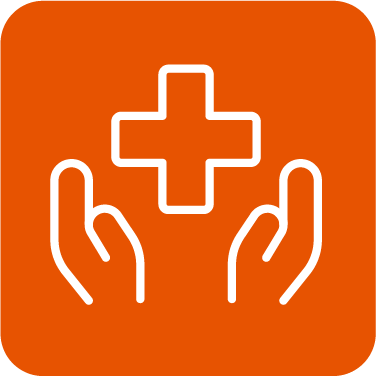Pediatric neurosurgery
- Brain conditions
- Congenital disorders
- Spinal conditions
- Trauma of head or spine
- Vascular malformation
A pediatric neurosurgeon specializes in diagnosis, treatment and management of head and spinal deformities and conditions of children’s nervous systems. They treat children from infancy to young adulthood.
When to see a pediatric neurosurgeon
How is a pediatric neurosurgeon different from other specialists?
For children with serious neurological conditions, choosing a specialist with experience caring for children will provide the best treatment option. Whether it is a minimally invasive technique or a therapeutic treatment, our providers will choose the path suited for your child’s condition.
When should you see a pediatric neurosurgeon and do I need a referral?
If your primary care provider sees a problem, they will refer you to a specialist.
 Brain conditions
Brain conditions
Brain tumor
- Medulloblastoma
- Ependymoa
- Astrocytoma
- Glioma
- Embryonal tumor
- Germ cell brain tumor
- Spinal cord tumor
- Craniopharyngioma
- Pineoblastoma
Chiari malformation type 1 (tissue extends into spinal canal) appears in childhood or adulthood. A few of the symptoms can include:
- Severe headache
- Poor hand coordination
- Trouble swallowing
Chiari malformation type 2 (head shape); almost always occurs with myelomeningocele, a form of spina bifida. A few of the symptoms can include:
- Changes in breathing patters
- Trouble swallowing
- Quick downward eye movements
- Craniosynostosis – premature fusion of cranial seams
- Sagital Synostosis
- Metopic
- Multiple sutures
- Plagiocephaly – flat spot on baby’s head
Hydrocephalus
- Ventriculoperitoneal
- Ventriculoatrial
- Ventriculopleural
- Endoscopic third ventriculostomy
- Hydrocephalus due to
- Tumor: colloid cyst; tectal glioma
- IVH of prematurity
- Infection
 Congenital disorders
Congenital disorders
Inherited conditions:
- Spina bifida – spine/spinal cord of fetus do not form properly
- Tethered cord
- Skull lesions or cysts
- Pseudotumor cerebri or idiopathic intracranial hypertension
 Spinal conditions
Spinal conditions
Spinal column abnormalities or injuries:
- Congenital conditions (tethered spinal cord)
- Congenital lesions (sacral dimple, hemivertebra, dermal sinus tract)
- Back pain
- Spondylolisthesis
- Pars defects
- Sciatica
- Herniated discs
Scoliosis is a curvature of the spine, usually to the side, and occurs typically during growth spurt before puberty. Symptoms can include:
- Uneven shoulders
- Uneven hip or waist
- Shoulder blade prominence not the same
Spinal cord tumors:
- Intramedullary – develop from cells of the spinal cord
- Intradural – develop inside the covering of the spinal cord
- Extradural (primary bone tumor, metastatic tumor) – develop outside that membranes surrounding the spinal cord
 Trauma of head or spine
Trauma of head or spine
Conditions of the head or spine due to an injury or accident:
- Fractures
- Concussion
- Skull fractures
- Spinal Fractures
- Burst Fracture
- Chance Fracture
- Ligamentous injury
- Occpital Cervical Fixation
 Vascular malformation
Vascular malformation
Conditions affecting vascular system:
- Arteriovenous malformation
- Pediatric aneurysm
